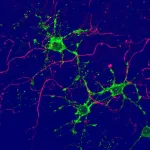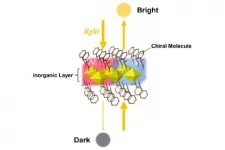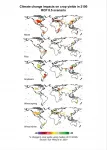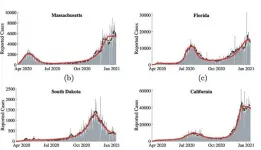(Press-News.org) Advancements in wearable technology are reshaping the way we live, work and play, and also how healthcare is delivered and received. Wearables that have weaved their way into everyday life include smart watches and wireless earphones, while in the healthcare setting, common devices include wearable injectors, electrocardiogram (ECG) monitoring patches, listening aids, and more.
A major pain point facing the use of these wearables is the issue of keeping these devices properly and conveniently powered. As the number of wearables one uses increases, the need to charge multiple batteries rises in tandem, consuming huge amounts of electricity. Many users find it cumbersome to charge numerous devices every day, and inconvenient service disruptions occur when batteries run out.
A research team, led by Associate Professor Jerald Yoo from the Department of Electrical and Computer Engineering and the N.1 Institute for Health at the National University of Singapore (NUS), has developed a solution to these problems. Their technology enables a single device, such as a mobile phone placed in the pocket, to wirelessly power other wearable devices on a user's body, using the human body as a medium for power transmission. The team's novel system has an added advantage - it can harvest unused energy from electronics in a typical home or office environment to power the wearables.
Their achievement was first published in the journal Nature Electronics on 10 June 2021. It is the first of its kind to be established among existing literature on electronic wearables.
Using the human body as a medium for energy transmission
To extend battery life and sustain fully autonomous - yet wireless - operations of wearable devices, power transmission and energy harvesting approaches are required. However, conventional approaches for powering up body area wearables are limited by the distance that power can be transmitted, the "path" the energy can travel without facing obstacles, and the stability of energy movement. As such, none of the current methods have been able to provide sustainable power to wearables placed around the entire human body.
The NUS team decided to turn the tables on these limitations by designing a receiver and transmitter system that uses the very obstacle in wireless powering - the human body - as a medium for power transmission and energy harvesting. Each receiver and transmitter contains a chip that is used as a springboard to extend coverage over the entire body.
A user just needs to place the transmitter on a single power source, such as the smart watch on a user's wrist, while multiple receivers can be placed anywhere on the person's body. The system then harnesses energy from the source to power multiple wearables on the user's body via a process termed as body-coupled power transmission. In this way, the user will only need to charge one device, and the rest of the gadgets that are worn can simultaneously be powered up from that single source. The team's experiments showed that their system allows a single power source that is fully charged to power up to 10 wearable devices on the body, for a duration of over 10 hours.
As a complementary source of power, the NUS team also looked into harvesting energy from the environment. Their research found that typical office and home environments have parasitic electromagnetic (EM) waves that people are exposed to all the time, for instance, from a running laptop. The team's novel receiver scavenges the EM waves from the ambient environment, and through a process referred to as body-coupled powering, the human body is able to harvest this energy to power the wearable devices, regardless of their locations around the body.
Paving the way for smaller, battery-less wearables
On the benefits of his team's method, Assoc Prof Yoo said, "Batteries are among the most expensive components in wearable devices, and they add bulk to the design. Our unique system has the potential to omit the need for batteries, thereby enabling manufacturers to miniaturise the gadgets while reducing production cost significantly. More excitingly, without the constraints of batteries, our development can enable the next generation wearable applications, such as ECG patches, gaming accessories, and remote diagnostics."
The NUS team will continue to enhance the powering efficiency of their transmitter/receiver system, with hopes that in future, any given power-transmitting device, be it a user's mobile phone or smart watch, can satisfy the network power demands of all other wearables on the body, thus enabling a longer battery lifetime.
INFORMATION:
Neurons, nerve cells in the brain, are central players in brain function. However, a key role for glia, long considered support cells, is emerging. A research group at the University of Basel has now discovered two new types of glial cells in the brain, by unleashing adult stem cells from their quiescent state. These new types of glia may play an important role in brain plasticity and repair.
The brain is malleable well into adulthood. Brain plasticity is not only due to the formation of new nerve connections. Stem cells present in the adult brain also ...
Moreover, they identified a correlation between the progression of the disease and certain corpuscles in the cell nuclei. They published their report in the journal Acta Neuropathological Communications on 13 April 2021.
Aggregates seem to have a function
Affecting over 50 million people, Alzheimer's disease is the most common form of dementia and primarily occurs in people over the age of 65. The pathology of the disease in the brain is mainly characterised by two factors: beta-amyloid plaques outside the nerve cells and tau proteins. The tau protein stabilises tube-like structures (microtubules) inside cells, which are relevant ...
With Oskar Aszmann and his team at the Department of Plastic, Reconstructive and Aesthetic Surgery, MedUni Vienna has long been regarded as a world leader in bionic limb reconstruction. It was only last year that the world's first fully integrated bionic arm prosthesis was developed at MedUni Vienna. This is ready-to-use and is described as "Plug and Play". Although all bionic aids have so far been used in humans, the technique known as osseointegration (direct skeletal attachment) has now been used for the very first time in a bearded vulture - the creature was given a new foot. A paper on this ground-breaking procedure has been published today (Friday) in the prestigious Journal Scientific Reports.
In large birds such as vultures, the loss of limbs results in the ...
Researchers at Tohoku University have demonstrated the designability of novel magnets with magic mirror-like characteristics in organic-inorganic hybrid perovskite (OIHP)-type compounds.
OIHP-type compounds, a type of material used to construct solar cells, possess exceptional optical properties and have recently attracted worldwide interest. Researchers are keen to harness their structural diversity.
Although the superior optical properties of OIHPs have been mainly studied for their photoelectric characteristics, several OIHP-type compounds are known to function as magnets that transmit light. Combining the excellent optical ...
Not only the very concise 11-year cycle, but also all other periodic solar activity fluctuations can be clocked by planetary attractive forces. This is the conclusion drawn by Dr. Frank Stefani and his colleagues from the Institute of Fluid Dynamics at the Helmholtz-Zentrum Dresden-Rossendorf (HZDR) and from the Institute of Continuous Media Mechanics in Perm, Russia. With new model calculations, they are proposing a comprehensive explanation of all important known sun cycles for the first time. They also reveal the longest fluctuations in activity over thousands of years as a chaotic process. ...
On average the earliest memories that people can recall point back to when they were just two-and-a-half years old, a new study suggests.
The findings, published in peer-reviewed journal Memory, pushes back the previous conclusions of the average age of earliest memories by a whole year.
They are presented in a new 21-year study, which followed on from a review of already-existing data.
"When one's earliest memory occurs, it is a moving target rather than being a single static memory," explains childhood amnesia expert and lead author Dr Carole Peterson, from Memorial University of Newfoundland.
"Thus, what many people provide when asked for their earliest memory is not a boundary or watershed beginning, before which there are no memories. Rather, ...
Shifts in weather patterns induced by climate change will increase extreme heat and reduce rainfall across major crop growing regions, with impacts on agricultural production. Will this trigger a decline in the supply of calories needed to sustain the world's growing population?
According to a study published in the Journal of Environmental Economics and Management, global calorie supplies are subject to continuing or even increasing vulnerability to climate change. Climate change could reduce global crop yields by 10% by mid-century and 25% by century's end, under a vigorous warming scenario, if farmers cannot adapt better than they did historically. ...
Every day, around 15 000 children under the age of five die from causes that could have been prevented.
But the children of highly educated parents survive more often than others. This statistic applies worldwide, according to a newly published sweeping systematic review in The Lancet.
The mother's level of education is particularly important for her children's survival.
"One year of extra education for the mother is associated with an approximately three per cent reduction in mortality on average," says Professor Terje Andreas Eikemo at the Norwegian University of Science ...
PROVIDENCE, R.I. [Brown University] -- By adding behavioral components to an infectious disease model, Brown University researchers have developed a new modeling approach that captures the peaks and valleys in new COVID-19 cases seen over the past 16 months.
The approach, published in the journal Scientific Reports, could be useful in forecasting the future trends in the current pandemic, as well as in predicting the course of future ones.
"We know that people's behavior matters in terms of how an infection is spread," said Vikas Srivastava, an assistant professor of ...
Tsukuba, Japan - To study the immune system in human health and disease, scientists commonly use the genetic manipulation of mouse hematopoietic stem and progenitor cells (HSPCs) as a powerful model system. These studies have been extremely valuable in the fight against a number of human diseases. However, the current procedures are complex, time-consuming, and expensive.
In a new study published in NATURE COMMUNICATIONS, researchers at the University of Tsukuba have developed a novel technique that has the potential to overcome the limitations associated with these models, which are known as bone marrow (BM) chimeric mice. This system allows scientists to observe and investigate how ...





